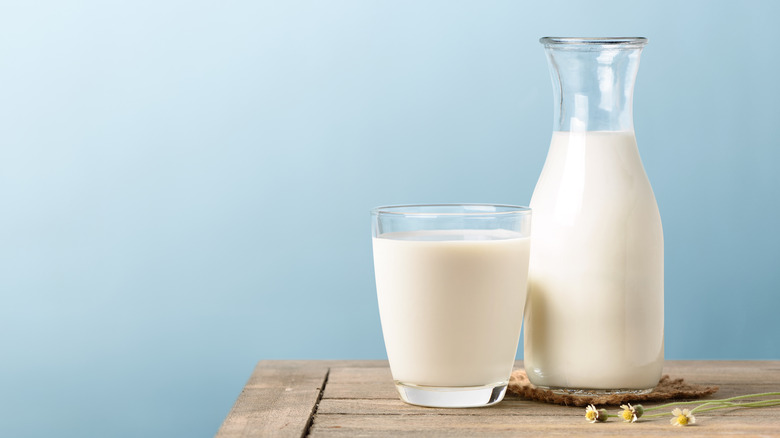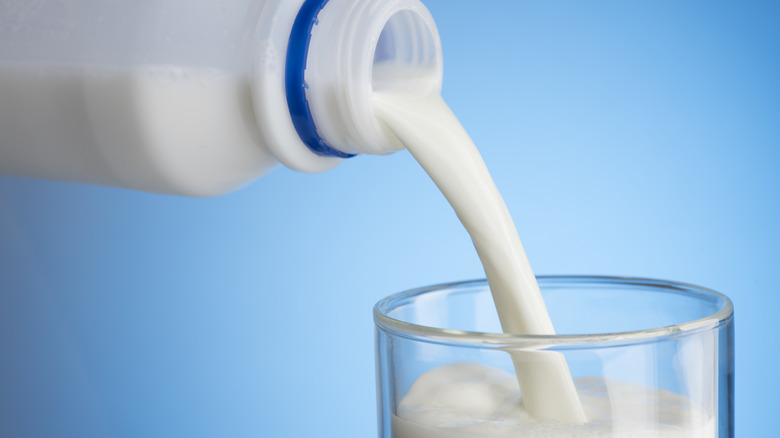What To Use If Your Vintage Recipe Calls For 'Sweet Milk'
Some cherished recipes are passed down from one generation to the next, but that doesn't mean they are always easily interpreted by modern cooks. Whether you're hoping to bring back an old recipe you haven't had in years or you find a vintage cookbook you want to try out, these older recipes can call for ingredients you don't necessarily understand or cooking techniques you're not familiar with. For example, in many vintage recipes, one of those ingredients that you may come across is "sweet milk," which can be confusing for modern cooks. But in order to understand what this is and how you can replace it, you need to know a bit of food history.
The story of sweet milk starts during the United States Great Depression when wasting any food would have been unacceptable. During this time, if milk had been sitting in the fridge too long or had started to go bad, people would still try to find a use for it. This meant that during this time there were several types of milk: soured milk, buttermilk, and sweet milk. Soured milk is milk that has been soured while still refrigerated and can be used for baking. Buttermilk is the fermented milk left over from the cream that was churned to make butter. It has a tangy flavor and is often used for things like biscuits and pancakes. Sweet milk simply refers to fresh, unfermented milk and was primarily made from whole milk, the most common type of milk available.
Whole milk was sweet milk back in the day
Whole milk was called "sweet" because it had not been processed to remove any of the milk solids, such as fat, which give milk its natural sweetness. As a result, whole milk had a rich, creamy flavor that made it a staple in many households. Despite the availability of other types of milk, whole milk remained the most commonly used type of milk in vintage recipes. This was largely due to its richness and versatility since it could be used in everything from baked goods to soups and stews.
When it comes to modern recipes that call for sweet milk, you can use simply use whole milk. Whole milk will result in a rich, creamy texture and the flavor you likely expect from the vintage recipe. So, don't worry when you see the term in a recipe. It is simply there to steer you away from soured milk or buttermilk — which would yield a very different result.

